
Harold Thomas Gregson, known professionally as John Gregson, was an English actor of stage, television and film, with 40 credited film roles. He was best known for his crime drama and comedy roles.
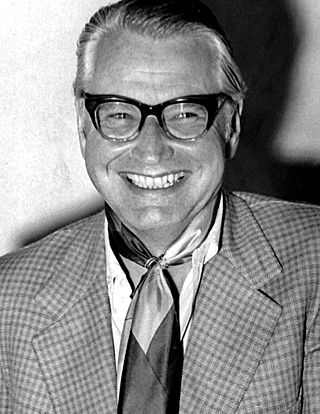
Kenneth Cooper Annakin, OBE was an English film director.
Cast a Dark Shadow is a 1955 British suspense film noir directed by Lewis Gilbert and written by John Cresswell, based on the 1952 play Murder Mistaken by Janet Green. It stars Dirk Bogarde, Margaret Lockwood, Kay Walsh, Kathleen Harrison and Robert Flemyng. The film released on 20 September 1955, distributed by Eros Films Ltd. in the United Kingdom and Distributors Corporation of America in the United States. The story concerns a husband who murders his wife.

Quartet is a 1948 British anthology film with four segments, each based on a story by W. Somerset Maugham. The author appears at the start and end of the movie to introduce the stories and comment about his writing career. It was successful enough to produce two sequels, Trio (1950) and Encore (1951), and popularised the compendium film format, leading to films such as O. Henry's Full House in 1952.

Passport to Shame, also known as Room 43 and Room Forty Three, is a 1958 British drama film directed by Alvin Rakoff, written by Patrick Alexander and starring Diana Dors and Herbert Lom. A young French woman becomes embroiled in a life of prostitution.
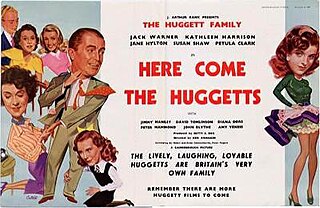
Here Come the Huggetts is a 1948 British comedy film, the first of the Huggetts series, about a working class English family. All three films in the series were directed by Ken Annakin and released by Gainsborough Pictures.

The Planter's Wife is a 1952 British war drama film directed by Ken Annakin, and starring Claudette Colbert, Jack Hawkins and Anthony Steel. It is set against the backdrop of the Malayan Emergency and focuses on a rubber planter and his neighbours who are fending off a campaign of sustained attacks by Communist insurgents while also struggling to save their marriage.

The Last Page, released in the United States as Man Bait, is a 1952 British film noir directed by Terence Fisher, starring George Brent, Marguerite Chapman and Diana Dors. The film was also known as Murder in Safety and Blonde Blackmail.

The Informers is a 1963 British crime film directed by Ken Annakin and starring Nigel Patrick, Margaret Whiting, Harry Andrews, Derren Nesbitt and Colin Blakely. It was produced by William MacQuitty, with screenplay by Paul Durst and Alun Falconer from the novel Death of a Snout by Douglas Warner. Cinematography was by Reginald H. Wyer. It was distributed in the UK by The Rank Organisation and the U.S. by Continental Film Distributors.
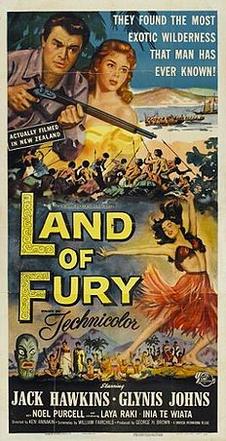
The Seekers is a 1954 British-New Zealand adventure film directed by Ken Annakin. It starred Jack Hawkins, Glynis Johns, Noel Purcell, and Kenneth Williams. The film was produced by the Rank Organisation and was shot at Pinewood Studios with location shooting around Whakatāne. The film's sets were designed by the art director Maurice Carter with costumes by Julie Harris. It was the first major international studio film shot in New Zealand. The film was adapted from the novel The Seekers by New Zealander John Guthrie. It was released in the United States by Universal Pictures as Land of Fury.
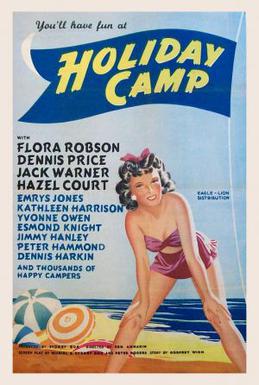
Holiday Camp is a 1947 British comedy drama film directed by Ken Annakin, starring Flora Robson, Jack Warner, Dennis Price, and Hazel Court, and also features Kathleen Harrison and Jimmy Hanley. It is set at one of the then-popular holiday camps. It resonated with post-war audiences and was very successful. It was the first film to feature the Huggett family, who went on to star in "The Huggetts" film series.
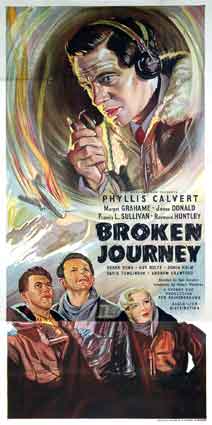
Broken Journey is a 1948 British drama film directed by Ken Annakin and featuring Phyllis Calvert, James Donald, Margot Grahame, Raymond Huntley and Guy Rolfe. Passengers and crew strugge to survive after their airliner crashes on top of a mountain; based on a true-life accident in the Swiss Alps.

Double Confession is a 1950 British crime film directed by Ken Annakin and starring Derek Farr, Joan Hopkins, William Hartnell and Peter Lorre. The screenplay by William Templeton is based on the novel All On A Summer's Day by H.L.V. Fletcher, written under the pen name John Garden.
Earl St. John was an American film producer in overall charge of production for The Rank Organisation at Pinewood Studios from 1950 to 1964, and was credited as executive producer on 131 films. He was known as the "Earl of Pinewood". John Davis of Rank called him "the greatest showman that The Rank Organisation has ever had, and probably the greatest showman to have lived in this country. "

Portrait of Alison is a 1956 British atmospheric crime film directed by Guy Green. It was based on a BBC television series of the same name, which aired the same year.

An Alligator Named Daisy is a 1955 British comedy film directed by J. Lee Thompson and starring Donald Sinden, Jeannie Carson, James Robertson Justice, Diana Dors, Roland Culver and Stanley Holloway. It was based on the 1954 novel of the same name by Charles Terrot.

Across the Bridge is a 1957 British thriller film directed by Ken Annakin and starring Rod Steiger, David Knight and Bernard Lee. It is based on the 1938 short story "Across the Bridge" by Graham Greene. According to his obituary, it was director Annakin's favourite film.

As Long as They're Happy is a 1955 British musical comedy film directed by J. Lee Thompson and starring Jack Buchanan, Susan Stephen and Diana Dors. It is based on the 1953 play of the same name by Vernon Sylvaine. It was shot in Eastmancolor at Pinewood Studios near London with sets designed by the art director Michael Stringer.

The Feminine Touch is a 1956 colour British drama film directed by Pat Jackson and starring George Baker, Belinda Lee and Delphi Lawrence. In 1957 it was released as A Lamp Is Heavy in Canada, and The Gentle Touch in the United States.

The Big Money is a 1958 British comedy film directed by John Paddy Carstairs and starring Ian Carmichael, Belinda Lee and Kathleen Harrison.


















